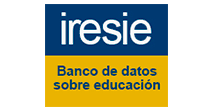EDUCATION OF THE BODY: PRODUCTION AND REPRODUCTION
DOI:
https://doi.org/10.5216/ia.v34i2.8507Abstract
In recent times, the body has become an ever more frequent object of study. So this study sets out to discuss the education of the body under capitalism, and especially in our present society. The question is asked: “How is the shape of the body determined in our present capitalist society?” The aim is to identify how the mediations to determine the shape of the body are established under this mode of production. The theoretical references used are those of Karl Marx, Theodor Adorno, Max Horkheimer and Georg Lukács. This theoretical study shows that the production and consumer interests of the capitalist production mode determines the shape of the body.Downloads
Downloads
Published
How to Cite
Issue
Section
License
Inter-Ação uses the Creative Commons Attribution 4.0 License for Open Access Journals (Open Archives Initiative - OAI) as the basis for the transfer of rights. Open access means making documents available on the Internet free of charge, so that users can read, download, copy, distribute, print, search, or link to the full text of documents, process them for indexing, use them as input data for software programs, or use them for any other lawful purpose, without financial, legal, or technical barriers.
Authors publishing in this journal agree to the following conditions:
1) Authors retain copyright and grant the journal the right of first publication, with the work simultaneously licensed under the Creative Commons Attribution License, which permits redistribution of the work with attribution and first publication in this journal.
2) Authors are permitted to enter into additional, separate agreements for non-exclusive distribution of the version of the work published in this journal (e.g., for publication in an institutional repository or as a book chapter), with attribution and first publication in this journal.
3) Authors are permitted and encouraged to publish and distribute their work online (e.g. in institutional repositories or on their home page) at any time before or during the editorial process, as this may generate productive changes as well as increase the impact and citation of the published work.















